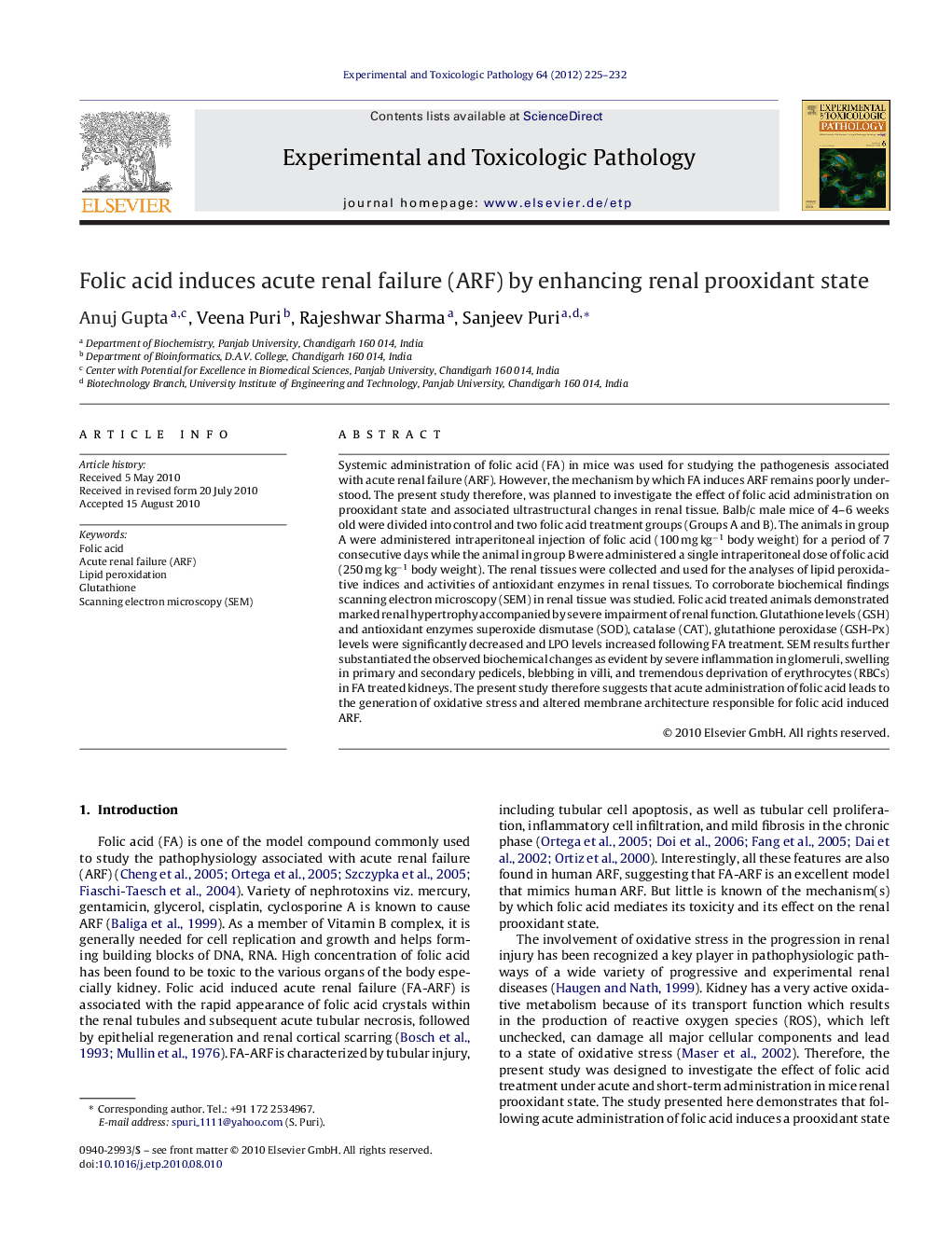| Article ID | Journal | Published Year | Pages | File Type |
|---|---|---|---|---|
| 2499200 | Experimental and Toxicologic Pathology | 2012 | 8 Pages |
Systemic administration of folic acid (FA) in mice was used for studying the pathogenesis associated with acute renal failure (ARF). However, the mechanism by which FA induces ARF remains poorly understood. The present study therefore, was planned to investigate the effect of folic acid administration on prooxidant state and associated ultrastructural changes in renal tissue. Balb/c male mice of 4–6 weeks old were divided into control and two folic acid treatment groups (Groups A and B). The animals in group A were administered intraperitoneal injection of folic acid (100 mg kg−1 body weight) for a period of 7 consecutive days while the animal in group B were administered a single intraperitoneal dose of folic acid (250 mg kg−1 body weight). The renal tissues were collected and used for the analyses of lipid peroxidative indices and activities of antioxidant enzymes in renal tissues. To corroborate biochemical findings scanning electron microscopy (SEM) in renal tissue was studied. Folic acid treated animals demonstrated marked renal hypertrophy accompanied by severe impairment of renal function. Glutathione levels (GSH) and antioxidant enzymes superoxide dismutase (SOD), catalase (CAT), glutathione peroxidase (GSH-Px) levels were significantly decreased and LPO levels increased following FA treatment. SEM results further substantiated the observed biochemical changes as evident by severe inflammation in glomeruli, swelling in primary and secondary pedicels, blebbing in villi, and tremendous deprivation of erythrocytes (RBCs) in FA treated kidneys. The present study therefore suggests that acute administration of folic acid leads to the generation of oxidative stress and altered membrane architecture responsible for folic acid induced ARF.
